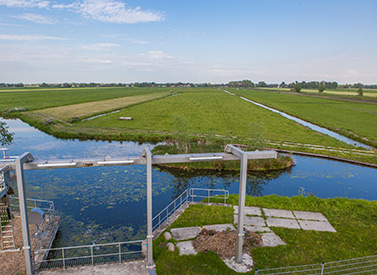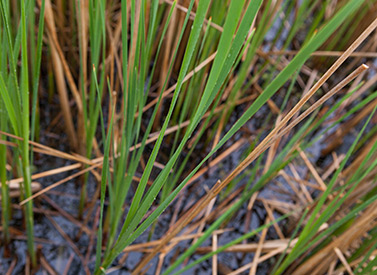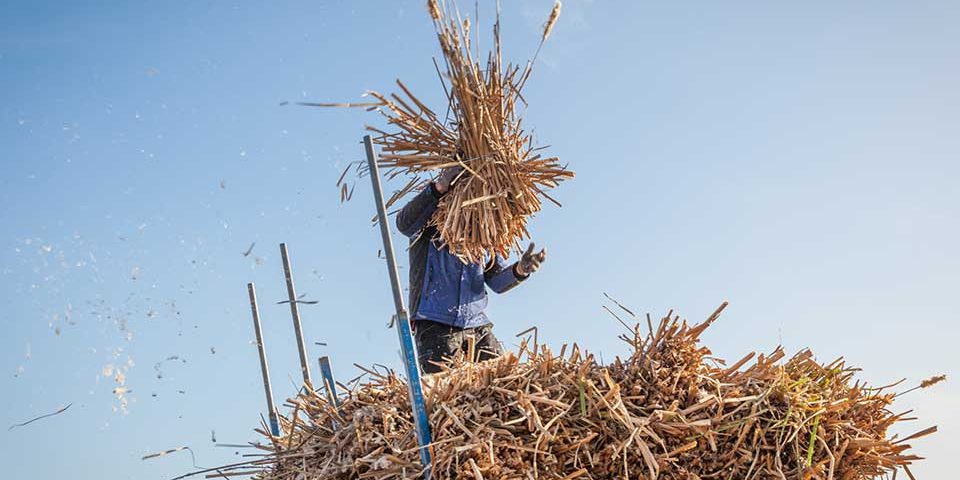Why we should be putting on rubber boots instead of draining the swamp
You thought forests were the most important carbon storage?

You thought forests were the most important carbon storage? Well, you will be surprised to hear that peatlands are storing twice as much organic carbon – even though they account for only 3 percent of the Earth’s surface.
The current trend of draining these swamps should therefore be alarming to all of us. Because additionally to destroying precious habitats, it causes the release of large amounts of CO2 and contributes to climate change. “This is not climate smart, this is not sustainable,” states Aldert van Weeren, an independent researcher and farmer who has a unique approach to saving peatlands through utilization. The fact that he is wearing rubber boots at an international conference, where you would normally expect formal clothing and dress shoes, shows that he thinks outside of the box.
Peatlands – you might know them under the name ‘mire’, ‘marsh’ or ‘swamp’ – are wetlands that contain a surface layer of peat. The peat forms due to a buildup of dead plant material which cannot decompose completely in the waterlogged conditions. If intact, they provide valuable ecosystem services: peatlands clear water from nitrogen, store carbon, work as water retention buffers and provide a habitat for a plethora of flora and fauna, including endangered species such as orangutans and forest elephants.
Peatlands are being drained in every region they occur in
Despite their value for local communities and wildlife, peatlands are being drained in every region they occur in. In Indonesia, which became notorious for its forest fires in swamp regions in 2015, they are mainly destroyed because of land clearing for palm oil plantations. Additionally to agriculture, the main reasons are infrastructure development, forestry and resource extraction. If dried up, former peatlands often turn into desertlike landscapes and cause the land to sag. This is especially concerning because they often appear along coasts which are already vulnerable to rising sea levels.
Fortunately however, there are efforts to preserve existing peatlands and renaturate degraded ones. In the region of Central Congo, where propsed mining concessions are closing in on wetlands, Ramsar sites have been designated. This means that the areas are under international protection. In other regions, most notably Indonesia, restoration initiatives block drainage canals and reforest the areas. In addition to restoring it, the aboveground biomass can also be used as a renewable resource, all while preserving the peat stock.

Europe should not point to Asia, they should do something themselves

This so-called paludiculture is a solution which is not exclusive to Southeast Asia. “Europe should not point to Asia, they should do something themselves” demands van Weeren. The European Union is the second biggest emitter of CO2 from peatland degradation after Indonesia. But the EU’s current regulations on agricultural subsidies prevents farmers from being able to implement this approach of simultaneous cultivation and conservation. Up on the stage, still clad in his rubber boots, van Weeren explains how he has discovered a way to use a crop that naturally grows in peatland: cattail (Typha latifolia). When dried, this plant can be used as insulation material. Due to its chemical properties, it doesn’t burn, which is a great quality for house insulation (remember the Grenfell Tower fire in London? The highrise, which burned down completely, was insulated with synthetical aluminum and polyehylene).
Even better, flour made from the plant can be consumed. It has been used by indigenous people in America for hundreds of years. The only obstacle that prevents van Weeren from expanding his pilot project in Northern Germany is the fact that cattail is not considered an agricultural crop. By officially growing a weed, he does not receive any subsidies – in contrast to cattle farmers who rise their livestock on former peatland areas. Even worse, because many vegetation covers are considered to be biotopes in Germany, it might be forbidden to mow the cattail.
We will have to see whether van Weeren will be able to expand on his innovative idea. Growing a crop like cattail while conserving the wetland would certainly mean putting on rubber boots and using peatlands in a sustainable way instead of “draining the swamp”. This metaphor refers to getting rid of something that is politically unwanted. One thing we can be sure of though: intact peatlands are certainly no wasteland.


